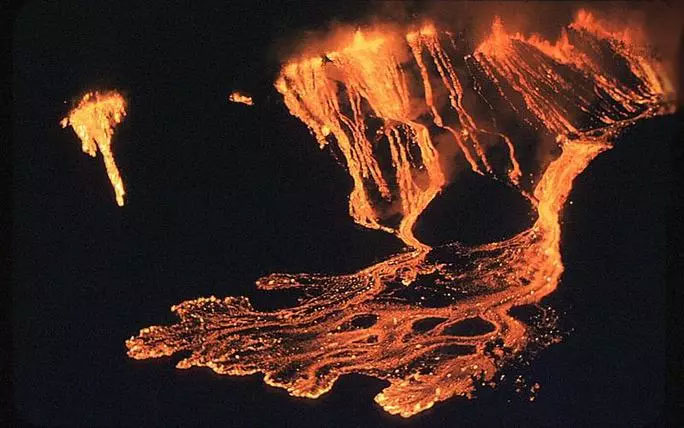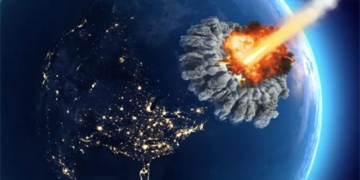Kilauea: The Fire Monster – the most active volcano in the world – does not have a conventional origin but is instead a monster from the depths of the Earth, as new research from Australia reveals.
According to geologist Laura Miller from Monash University in Australia and her colleagues, Kilauea was formed beneath the current hotspot nearly 100 kilometers down, rather than from shallower magma chambers like most volcanoes around the world.
Two shallow magma chambers have previously been identified beneath Kilauea, but they are not large enough to account for all the molten rock that this fire monster erupts. A larger chamber, located 11 kilometers deep, was identified through seismic wave data in 2014, but it also is not sufficient to explain Kilauea’s aggressive behavior.

An eruption of the “fire monster” – (Photo: USGS)
According to Science Alert, in the new study, scientists analyzed fragments from ancient volcanic rocks excavated from the southeastern flank of the Big Island of Hawaii, showing that Kilauea is made up of pyroclastic material from nearly 100 kilometers deep!
Approximately 210,000 to 280,000 years ago, the Pacific tectonic plate shifted, and a significant amount of magma surged from the deep mantle straight up to the ocean surface. As this hot liquid cooled, it formed a large conduit dating back 100,000 years. From this, Kilauea was born.
Additional evidence comes from the volcanic structure: instead of partially melting, it appears that the fire monster Kilauea was initially formed through a process of fractional crystallization, meaning the creation of crystals in the depths of the magma, which did not react with the remaining melt later.
This super material was formed at extremely high temperatures, above 1,100 degrees Celsius, and pressures above 3 GPa, only found in the deep Earth.
“We found that the samples could only have formed through the crystallization and removal of garnet” – Dr. Miller stated. Garnet is a type of crystal that forms when magma is subjected to high pressure and temperature from 90 to 150 kilometers underground.
The research was recently published in the journal Nature Communications.


















































